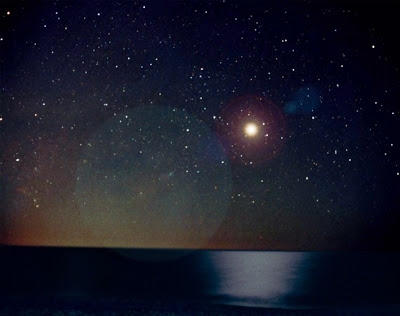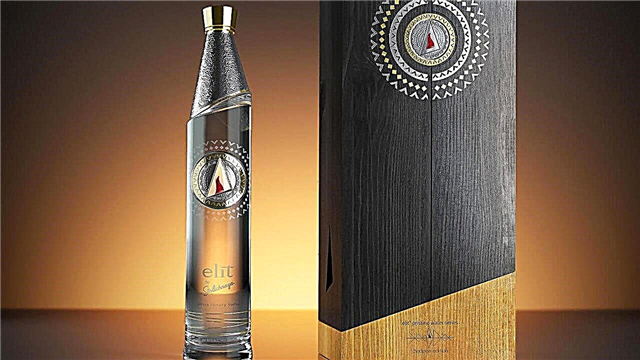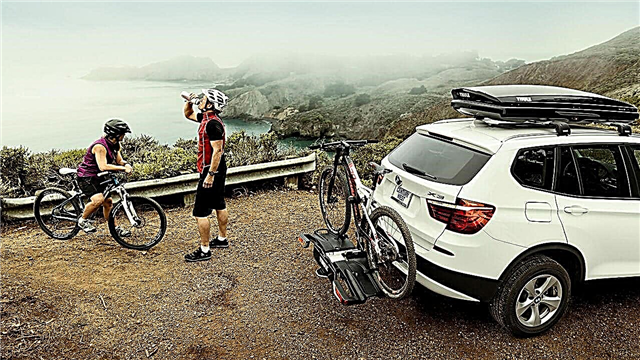Majestic waterfalls are one of the best proofs of the power and beauty of nature. The sight of millions of liters of water that tumble with noise from the edge of a cliff or cascade down the rocks is simply mesmerizing. However, in order to attract the attention of tourists, the waterfall must have some peculiarities. For example, it should be the most powerful or the highest waterfall in the world.
And if everything is simple with the powerful one - this is Iguazu Falls (more precisely, this is a whole complex of 275 waterfalls), in which 1700 cubic meters of water flow from a height of 80 meters per second, scientists can not guarantee the absolute accuracy of measurements of Earth's waterfalls. However, based on various scientific sources, it is still possible to answer the question of which waterfall is the highest in the world.
10. Brown Falls, Fjordland, New Zealand
 This waterfall, which is fed by the waters of mountain Lake Brown, has become the subject of debate about whether it is the highest in New Zealand or not.
This waterfall, which is fed by the waters of mountain Lake Brown, has become the subject of debate about whether it is the highest in New Zealand or not.
Based on a study of the NZMapped GPS topographic map (which is itself taken from Land Information New Zealand data), experts suggested that the height of the waterfall is 836 meters, although according to other sources its height is 619 meters. Perhaps this is due to the fact that the first 200 meters or so, Brown Falls goes in an inclined stream before making a steep cascade. And the lower part of the waterfall winds through dense vegetation, which hides its path from most random onlookers.
9. James Bruce, British Columbia, Canada
 This waterfall, 5 meters wide, seems like a thin stream when compared with other highest waterfalls. But the length of James Bruce is truly gigantic - 840 meters.
This waterfall, 5 meters wide, seems like a thin stream when compared with other highest waterfalls. But the length of James Bruce is truly gigantic - 840 meters.
The waterfall is fed by ice water from a snowy plain, and most of it dries out by July. Therefore, if you want to admire the full-flowing waterfall, it is better to go to it in winter or spring.
This waterfall is considered the highest in North America.
8. Puukaoku, Hawaii, USA
 Another record-breaking waterfalls is located on a cliff on the northeast coast of the island. Its height is 840 meters.
Another record-breaking waterfalls is located on a cliff on the northeast coast of the island. Its height is 840 meters.
Puukaoku formed a deep crack in porous volcanic basalt rock formations. Because of this, seeing him is not so easy. Tourists can watch the waterfall either sitting in a boat or from a helicopter, along with experienced guides who know exactly where to look for the waterfall. The howling wind and splashes of water turning into a “misty spray” give viewers a magnificent view of a truly rare natural phenomenon.
7. Balaifossen, Hordaland, Norway
 This is the so-called “seasonal” waterfall, depending on the melting snow in the mountains of the region.
This is the so-called “seasonal” waterfall, depending on the melting snow in the mountains of the region.
Therefore, its appearance and flow rate can vary greatly from season to season and from year to year. In warm time, you can see how the waterfall “shrinks” from its normal width of 6.1 meters to a narrow brook. Although the waterfall currently stands as one of the highest in Europe (850 meters), its very existence may be uncertain if climate change leads to a decrease in snow cover in the region and it falls below the level necessary for the existence of the waterfall.
6. Winnufossen, Møre og Romsdal, Norway
 This glacial waterfall is considered the highest waterfall in Europe and one of the most spectacular. Its maximum height is fantastic 860 meters.
This glacial waterfall is considered the highest waterfall in Europe and one of the most spectacular. Its maximum height is fantastic 860 meters.
As it falls, Vinnufossen splits into a series of interwoven streams, and their lace, as it were, embraces the surrounding trees. The combination of running water amidst lush greenery delights many tourists, and considering that there are a number of attractions near the waterfall, such as the Troll Staircase and Rondane National Park, it becomes clear that there are always a lot of people near Vinnufossen.
5. Umbilla Amazonas, Peru
 Discovered in 2007, the waterfall is located in a remote area of the Amazon in northern Peru. Despite the fact that he is currently at number five on our list, his height is still not fully understood.
Discovered in 2007, the waterfall is located in a remote area of the Amazon in northern Peru. Despite the fact that he is currently at number five on our list, his height is still not fully understood.
The National Geographic Institute of Peru claims that the height of Umbilla is 895.4 meters, but other sources say that this waterfall is a little shorter and boasts only 870 meters. Be that as it may, it is still longer than Vinnufossen, which is on the sixth line in our top 10 highest waterfalls.
Yumbilla is a level waterfall with four large tiers. Like many other waterfalls, the Peruvian giant depends on seasonal weather conditions. Its width increases during the rainy season and narrows during the dry months.
Not far from Umbilla are the famous Gosta waterfalls (an impressive pair of cascades that fall from a height of 771 meters) and Chinata. The Ministry of Tourism of Peru in every way contributes to the influx of tourists to these natural attractions. Surrounded by lush rainforests in remote mountains, one of the largest waterfalls on Earth awaits adventurous nature lovers (of course, accompanied by a local guide).
4. Oloupena Molokai, Hawaii
 The “neighbor” of Puukaoku on the island is located on an isolated northeastern coast and carries its waters from a height of 900 meters.
The “neighbor” of Puukaoku on the island is located on an isolated northeastern coast and carries its waters from a height of 900 meters.
Oloupena looks like a multi-level, ribbon-like thin stream flowing along one of the world's highest sea cliffs. Surrounded by huge mountains on both sides, this magnificent waterfall is so far away that there is no land path to it. Like Puukoku, it is only available by air or water. The best time to watch Oloupen Falls falls on the rainy season (November to March).
3. Three sisters, Ayacucho, Peru
 The beautiful 914-meter waterfall is named after three different levels that interrupt its flow. Water from the upper two tiers falls into a large, natural water sump. The third level, which is almost impossible to see, exits the pool and flows into the Kutivireni River, located below.
The beautiful 914-meter waterfall is named after three different levels that interrupt its flow. Water from the upper two tiers falls into a large, natural water sump. The third level, which is almost impossible to see, exits the pool and flows into the Kutivireni River, located below.
The waterfall is surrounded by lush, moist tropical forests, and you can only see it from the air. Although there are paths leading to the Three Sisters, the dense vegetation of the area makes it impossible to observe the entire length of the fall of the waterfall from the ground.
2. Tugela, Kwazulu-Natal, South Africa
 The total height of the South African five-level Tugela Falls is 948 meters. It is the second largest waterfall in the world.
The total height of the South African five-level Tugela Falls is 948 meters. It is the second largest waterfall in the world.
A narrow ribbon of a waterfall falls from the eastern edge of the Dragon Mountains. Getting to Tugela on top of the Amphitheater is much easier than getting to most of the highest waterfalls in the world. This is a well-known tourist route running through the Royal Natal National Park.
Two paths lead to the waterfall, and both offer an impressive view. One of the routes starts from the Guard’s car park in Witsyszioek and leads to the top of the mountain. However, only physically strong people can overpower it due to thin air.
The other way is more gentle and short, and consists of a walk through the Natal Park to a place where you can see how an uncontrolled stream of water rushes from the top of the Amphitheater in a cascade.
1. Angel (aka Kerepakupai-Meru), Canaima, Venezuela
 This waterfall has stood the test of time and officially bears the title of "highest waterfall on Earth." Its height is 979 meters, and the height of the free fall of water is 807 meters.
This waterfall has stood the test of time and officially bears the title of "highest waterfall on Earth." Its height is 979 meters, and the height of the free fall of water is 807 meters.
Water overthrows from the “Devil’s Mountain”, Auyantepui - an isolated plateau, at the top of which rainfall collects. And, therefore, the appearance of this waterfall is a miracle and strangeness in itself.
 If you want to look at this world miracle, keep in mind that clouds often hide its peak, and you need a little luck to enjoy a spectacle that you will never forget. You can get to Angel only by air or by water. Complex tours are offered to tourists, which include a flight from the cities of Caracas or Ciudad Bolivar to the village of Kanaimu, from which the visit to the national park begins. From there, you will have to get to the waterfall by water, and this is also included in the tour.
If you want to look at this world miracle, keep in mind that clouds often hide its peak, and you need a little luck to enjoy a spectacle that you will never forget. You can get to Angel only by air or by water. Complex tours are offered to tourists, which include a flight from the cities of Caracas or Ciudad Bolivar to the village of Kanaimu, from which the visit to the national park begins. From there, you will have to get to the waterfall by water, and this is also included in the tour.
How the double name of the waterfall appeared
 The waterfall owes its original name to the American pilot James Angel, who was looking for ore deposits from the air (although there is speculation that the subject of the search was diamonds). It was he who attracted the attention of the general public to the gigantic waterfall, and since in Spanish the surname Angel is read as Angel, the natural curiosity he called was called.
The waterfall owes its original name to the American pilot James Angel, who was looking for ore deposits from the air (although there is speculation that the subject of the search was diamonds). It was he who attracted the attention of the general public to the gigantic waterfall, and since in Spanish the surname Angel is read as Angel, the natural curiosity he called was called.
The waterfall was renamed Kerepakupai-Meru in 2009, at the initiative of the Venezuelan leader Hugo Chavez. This was a tribute to the politics of anti-imperialism. Since the waterfall was in Venezuela long before Angel, Chavez decided that the national heritage of the country should not bear the name of a foreigner.
In Russia, there are also many waterfalls. The highest of them is Talnikovy. This five-step 600-meter waterfall is located in the Putoransky Nature Reserve in the Krasnoyarsk Territory. However, tourists rarely see him, since there is no transport or hotel infrastructure near him.











